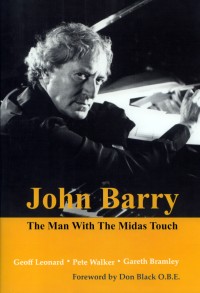Robert Farnon's Trade Secret!
revealed by FORREST PATTEN
Have you ever found yourself listening to a Robert Farnon recording and, upon hearing something out of the ordinary, shaking your head and asking "how did he do that?" My Dad and I used to do that a lot. In fact, I’m still doing that today. It’s an on-going process. Here’s an example. I’ve always loved Bob’s suite of Scottish pieces, From The Highlands. I will readily admit that I’ll find myself pulling out a handkerchief and wiping my eyes when listening to "Annie Laurie" (with that beautiful build and pay-off during the final bridge) and the melody to Robert Burns’ "My Love Is Like A Red, Red Rose." But one of the most fascinating aspects of that album has been at the very end where "I Love A Lassie" transitions into the reprise of "The Bluebells Of Scotland." For years, I believed that the two pieces had been recorded separately and only came together by an appropriate electronic segue created by a recording engineer in the final mix. It wasn’t until the early 1980’s when I attended a Robert Farnon concert in Vancouver, B.C. that I heard this work performed live and realized that Bob had magically been able to manipulate the two tempos to work together in tandem. For those of us who have tried to figure out the Robert Farnon methodology to writing and arranging, it becomes clear after a while that there is no methodology. Just as Joan Of Arc heard "divine voices," Bob is blessed by his own inward and abundant talent. In other words, if you ask him to explain how he does what he does, or what inspires him to write something in a particular way, Bob will likely look at you, smile, shrug his shoulders, and tell you something like "I’m not really sure. It’s just inside of me and I write what comes out." Well, after re-visiting From The Highlands while driving into work recently, I finally decided to swallow my pride and to call Bob and ask him the question that has haunted me for years: Musically, how was that flawless transition made between "I Love A Lassie" and "The Bluebells Of Scotland"? Revealed for the first time, here is his enlightening, educational and surprising answer. Essentially, Bob needed a device that would keep the pace of "Lassie" going while not slowing it down in tempo to accommodate the pacing of "Bluebells." Although both pieces are written in 4/4 time, because one is fast and the other slow, they could not fit on top of one another. While experimenting, Bob decided to add an additional beat to "Bluebells" (making it 5/4 rather than 4/4 time). This solved the problem and allowed the two pieces to be played simultaneously. With the Farnon magic at work, the listener never hears the difference. So finally the secret is out. It’s safe to say that when Robert Farnon writes and/or arranges a score, he never misses a beat! from Journal Into Melody : September 2004



